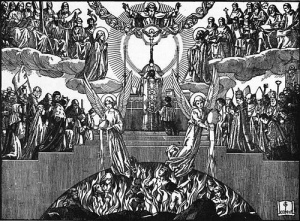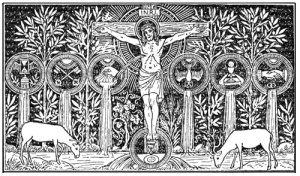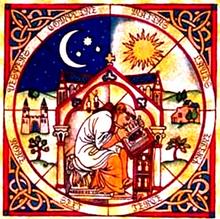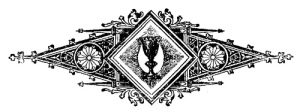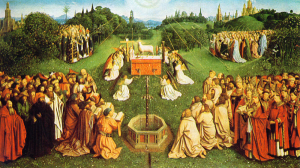 In my last entry, I briefly described purgatory. Here is a quick review: It is a purification on the way to heaven, if we are not prepared to go immediately to heaven. This is due to the effects of sin throughout our lifetime. As long as we are not in the state of mortal sin (so go to confession) when our time on this earth comes to an end, we either go straight to heaven, or spend a bit of time getting ready for heaven, being conformed more to Christ to be truly prepared to enter the kingdom. It is said that the souls in purgatory sing the Gloria, because they know for sure they will be united with God in heaven someday. (So, again, go to confession!!!)
In my last entry, I briefly described purgatory. Here is a quick review: It is a purification on the way to heaven, if we are not prepared to go immediately to heaven. This is due to the effects of sin throughout our lifetime. As long as we are not in the state of mortal sin (so go to confession) when our time on this earth comes to an end, we either go straight to heaven, or spend a bit of time getting ready for heaven, being conformed more to Christ to be truly prepared to enter the kingdom. It is said that the souls in purgatory sing the Gloria, because they know for sure they will be united with God in heaven someday. (So, again, go to confession!!!)
So…what is heaven like? I mean, we all want to go there, don’t we?
Often, people believe heaven to be like one big party, with everyone doing their own self-expressive dance and having a great time doing whatever they want. Sorry to tell you, that’s not what heaven is like! Heaven is not chaos, with everyone doing whatever they feel like! Heaven is the ordered praise of God, all creation united as one in a song of joy.
The Catechism teaches: “Those who die in God’s grace and friendship and are perfectly purified live for ever with Christ.” (CCC 1023). It continues, “This perfect life with the Most Holy Trinity – this communion of like and love with Trinity, with the Virgin Mary, the angels and all the blessed – is called ‘heaven’. Heaven is the ultimate end and fulfillment of the deepest human longings, the state of supreme, definitive happiness.” (1024)
This perfect state is often described in Scripture as the heavenly banquet, the wedding feast, the heavenly Jerusalem. When we participate in the Sacraments, especially the Holy Sacrifice of the Mass, it is said that the veil between heaven and earth is lifted and we catch a brief glimpse of heaven. The manner of our participation will affect how closely we can represent the heavenly banquet, and therefore how clearly the symbols speak – remember that to be truly symbolic, sacramental, means to make present invisible heavenly realities.
Here are a couple of questions (courtesy an exercise one of my professors often does in presentations) to reflect on what heaven is like:
Is heaven radiant or dull? Light or dark? Living or dead? Earthly or detached from earthly things? “Modern” or transcending beyond all ages? Empty or populated? (With whom?) Is heaven ordered or chaotic?
